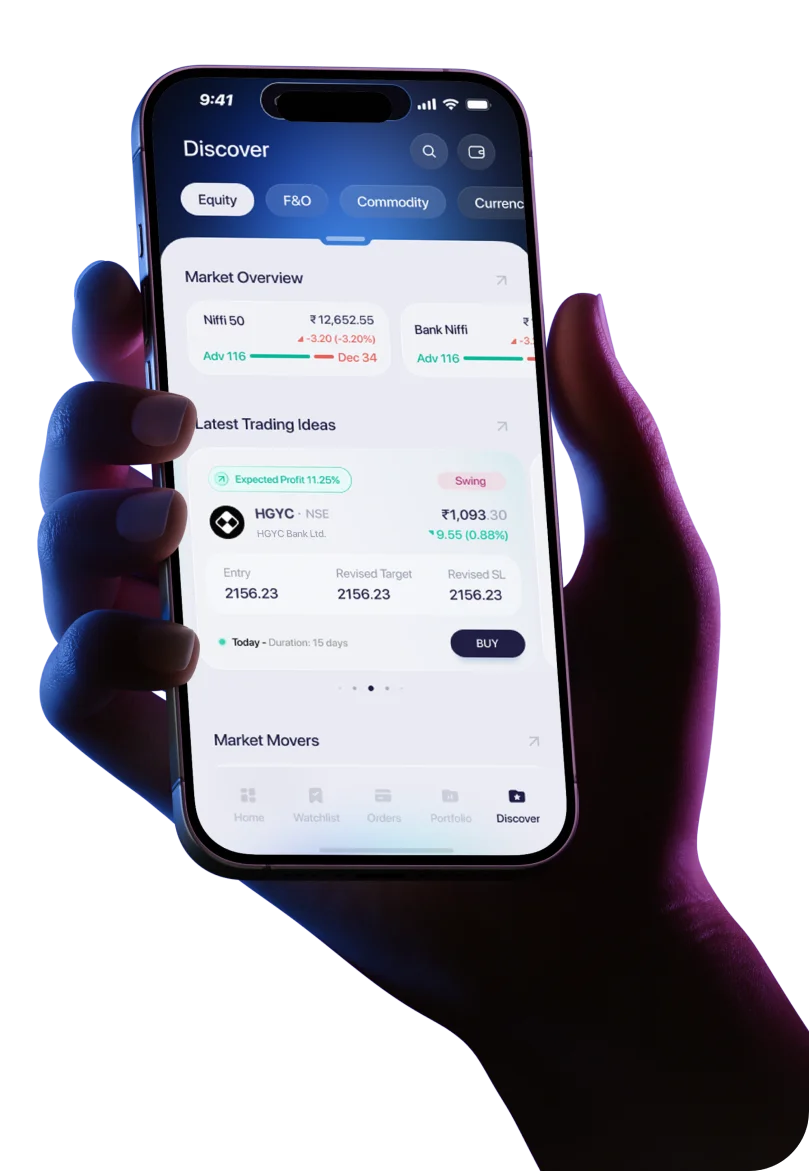Introduction
Technical indicators are the backbone of modern trading strategies. They help traders decode price movements, recognize patterns, and make informed decisions. Among these, some indicators go beyond simple trend spotting—they quantify market strength and reveal when momentum is shifting. One such tool is the Qstick indicator, a lesser-known but highly effective momentum gauge, especially for those trading on advanced option trading platforms.
The Qstick indicator helps traders identify whether buying or selling pressure dominates the market by analyzing price differences between open and close levels over time. For option traders, who rely heavily on timing and direction, understanding this indicator can make a crucial difference in decision-making—particularly during volatile or bear market conditions.
Before you make your next options trade, here’s what the Qstick indicator can reveal about market momentum and trend strength.
What Is the Qstick Indicator?
The Qstick indicator is a candlestick-based momentum indicator developed by Tushar Chande. Its core purpose is to quantify the strength of a trend—essentially converting candlestick behavior into a numerical signal that helps traders confirm whether the market is bullish or bearish.
It is calculated by taking the moving average of the difference between the close and open prices of an asset over a defined period.
Mathematically:
Qstick = n-period moving average of (Close – Open)
When the result is positive, it indicates that closing prices have been consistently higher than opening prices—a sign of a bullish bias. Conversely, a negative Qstick shows persistent selling pressure.
Unlike indicators like the MACD or RSI, which focus on price momentum or relative strength, the Qstick is directly tied to candlestick patterns. This makes it ideal for traders looking to quantify trend persistence instead of relying solely on visual observation.
How the Qstick Indicator Works
The interpretation of the Qstick indicator revolves around its relationship with the zero line and its own moving average.
- Positive Qstick values suggest that the average closing price is higher than the average opening price—signifying buying pressure or a potential uptrend.
- Negative values indicate that the average closing price is below the opening price—implying sustained selling pressure or a downtrend.
- Crossovers around the zero line often act as early trade signals. When Qstick crosses above zero, it may hint at a trend reversal to the upside; when it dips below zero, it could signal emerging weakness.
To reduce noise, traders often smooth the Qstick further by applying a moving average to it. This helps filter out short-term volatility and makes longer-term trends clearer.
Imagine a daily chart of Nifty or a large-cap stock where prices have closed higher for ten consecutive sessions. The Qstick indicator would steadily rise above zero, showing strong bullish momentum. If the same stock starts closing below its opening levels, the Qstick gradually falls, hinting at exhaustion or reversal—a cue that becomes valuable for traders planning option entries.
Qstick Indicator in Option Trading
Options traders operate in a world of timing, direction, and volatility. The Qstick indicator helps them gauge short-term and medium-term momentum before committing to call or put options.
Here’s how:
- Identifying trend direction: A consistently positive Qstick indicates underlying strength, favoring call buying or bullish spreads.
- Spotting weakness: A Qstick that slips below zero signals potential weakness, which can align with buying put options or forming bearish positions.
- Strike selection and timing: Since Qstick quantifies momentum, traders can align it with expiration cycles. A rising Qstick before expiry might justify holding bullish positions longer; a falling one might prompt early exits.
Compared with other tools like RSI or MACD, Qstick offers an advantage—it reads actual candlestick body averages rather than price changes or relative strength. This makes it more responsive during quick reversals, a critical factor in option trading platforms where seconds matter.
Traders often use Qstick alongside Bollinger Bands, volume, or RSI to confirm entries. When the indicator aligns with other momentum signals, confidence in the trade setup improves significantly.
Using the Qstick Indicator in Bear and Bull Markets
The Qstick indicator behaves differently across market phases, helping traders adapt strategies to both bullish and bearish environments.
- In a bull market:
The Qstick remains positive for extended periods. Traders can use rising Qstick values to hold long positions or write put options, expecting steady upward momentum. When Qstick starts flattening, it may suggest the rally is losing steam. - In a bear market:
The Qstick often stays negative, indicating consistent selling. Traders can use these signals to identify shorting opportunities or buy put options. A sudden move from negative to positive can hint at a possible trend reversal or short-covering rally.
Practical tip:
Use Qstick crossovers with price action. A Qstick rising from negative to positive when prices break above a resistance level provides stronger confirmation than either signal alone.
Best Practices and Tips for Traders
To get the most out of the Qstick indicator, traders should follow a few guidelines:
- Combine with other indicators: Pair Qstick with volume, RSI, or MACD for better confirmation of strength or reversal.
- Use multiple timeframes: Check both daily and weekly Qstick readings to validate broader trend direction.
- Risk management: Even when Qstick gives strong signals, always define stop-loss levels to manage downside risk.
- Back-test thoroughly: Before using it live, test Qstick-based setups on historical data to understand its response in different volatility conditions.
- Avoid over-optimization: Stick to common periods like 8, 10, or 14-day averages instead of constantly tweaking settings.
Limitations of the Qstick Indicator
No indicator is flawless—and the Qstick indicator is no exception.
- It can generate false signals in sideways or low-volatility markets, where open-close differences are minimal.
- Lagging nature: Since it’s a moving average of past values, it reacts after the price move has started.
- It may mislead traders during sudden news-driven spikes, as one large candle can distort averages temporarily.
Hence, Qstick should be part of a broader toolkit—not a standalone decision-maker. Combining it with volume confirmation or trendlines significantly enhances accuracy.
Practical Example: Using Qstick for an Options Trade
Let’s consider a practical illustration.
A trader observes that Nifty 50 has been oscillating near 24,500. The Qstick indicator, set on a 10-day average, moves from –0.75 to +1.20, crossing above zero.
Interpretation:
- The average closing price is now higher than the opening price—momentum has shifted bullish.
- The trader confirms with RSI > 55 and rising volumes.
- Based on this alignment, the trader buys 24,600 CE (Call Option) on the option trading platform.
Within a few sessions, Nifty climbs to 24,900. The Qstick remains positive, indicating sustained strength. When the Qstick begins to flatten near +0.80, the trader exits, locking in profits before momentum fades.
This example shows how Qstick supports better entry and exit timing, helping option traders avoid emotional trades and maintain discipline.
FAQs
Q1. What is the best setting for the Qstick indicator?
Commonly, traders use 8, 10, or 14 periods depending on their timeframe. Shorter settings respond faster but create more noise.
Q2. Can Qstick be used for intraday trading?
Yes, it works well on shorter intervals (like 15-min or hourly charts) for identifying quick reversals.
Q3. Is Qstick reliable in sideways markets?
Not entirely. It performs best in trending conditions where clear open-close differences exist.
Q4. How does Qstick compare with MACD or RSI?
While MACD measures price momentum and RSI tracks overbought/oversold levels, Qstick focuses on candlestick body averages, giving a unique trend strength perspective.
Q5. Can beginners use Qstick effectively in option trading?
Absolutely. With basic understanding and practice, even new traders can use it to confirm directional bias.
Conclusion
The Qstick indicator is an underrated yet powerful tool for identifying real trend momentum based on candlestick data. It helps traders understand whether buyers or sellers are in control—an insight especially valuable in options trading, where timing matters most.
By combining Qstick with other indicators and maintaining solid risk management, traders can improve precision in both bull and bear markets. Before your next trade, take a moment to check what the Qstick indicator says—it might just give you the edge you need.




 Easy & quick
Easy & quick
Leave A Comment?